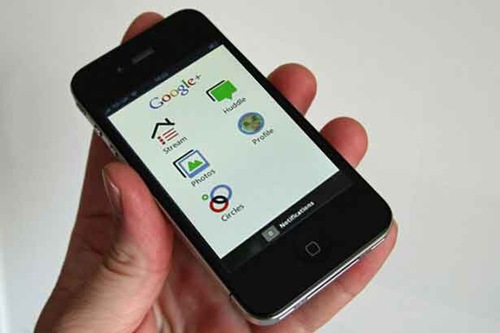 After a short wait (made to feel much longer given how quickly hoards of users took to the new social networking site), there is an official Google+ app for iOS. An update was issued quickly after its initial launch to plug some of the early glitches and it’s now searchable in the App Store via iPhone and as well as on iTunes. While more updates are sure to come (and judging by some clunky navigation, we’d guess in swift succession), it’s already made it to the top of the iOS App Store.
After a short wait (made to feel much longer given how quickly hoards of users took to the new social networking site), there is an official Google+ app for iOS. An update was issued quickly after its initial launch to plug some of the early glitches and it’s now searchable in the App Store via iPhone and as well as on iTunes. While more updates are sure to come (and judging by some clunky navigation, we’d guess in swift succession), it’s already made it to the top of the iOS App Store.
Like Google+, the app has a simple setup and easily gives you a comfortable mobile experience. Here’s our first run through with the app, photos and impressions included. We’ll also look at how it stacks up against the veteran Android app.
Home Screen
The Google+ app’s home screen is identical to the Android apps. From here you access your Stream, Profile, Photos, Circles, or begin a chat using Huddle (which you can add multiple people to). Checking and responding to notifications is similarly simple and familiar.

Photos
When you pull up your photos tab, you see options to view images from your Circles, those tagged of you, your own albums, as well as an option that says “from your phone.” Don’t worry, these stay private until you decide otherwise. Clicking this pulls up all the photos stored on your phone and you can share a maximum of four at a time. Tapping on the bar that says “Your circles” will allow you to choose who you are sharing the photos with, and you can determine whether or not you want to include location. You can also upload photos on the fly via the camera icon in the upper right hand corner of the Photos home screen.

This is all setup nearly identically to the Android app with a few minor exceptions.
Stream
After selecting Stream, you can swipe to the right to see posts rolling in from your Circles, nearby users, or Google+’s general population. In the right hand corner you can post to the Stream or check-in. Unfortunately, there is no way to see updates from select Circles – you’re only option is to view posts from your entire contact list. Clicking on posts gives you the option to comment or +1.


Circles
Choosing Circles from the home screen brings up the option to view your contacts singularly or your designated Circles. If you want to add or remove people from your Circles, selecting the “people” tab and then the individual in question gives you the option. Their page will show the Circle you have them in and clicking this gives you the option to change this.

If you go for Circles, you can create a new Circle or view the ones you already have. This is where you can see posts from the Circles you want. There is an option to choose “posts” and “photos” to see updates from specific groups. It’s sort of a round-about way to see the information you’re most interested in, but at least there’s an option.

Editors' Recommendations
- How to find your phone number on iPhone or Android
- iPhone SE deals: Refurbished 2nd and 3rd Gen iPhones
- How to view Instagram without an account
- Nomad’s new iPhone case and Apple Watch band may be its coolest yet
- An Apple insider just revealed how iOS 18’s AI features will work


